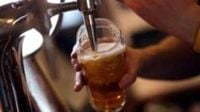Foster’s drinkers across the UK are about to see a familiar pint get a little lighter—at least in terms of alcohol content. Heineken UK, the brewer behind the iconic Australian-branded lager, has announced that starting in February 2026, Foster’s will have its alcohol by volume (ABV) reduced from 3.7% to 3.4%. This marks the second time in just three years that the beer’s strength has been dialed down, following a previous reduction from 4% to 3.7% in January 2023.
Why the gradual shift towards a weaker brew? The answer, according to reporting from BBC and NationalWorld, lies in a mix of government policy, changing consumer habits, and the ever-present pressure of inflation on both brewers and drinkers.
Heineken UK says the decision is rooted in new alcohol duty rules introduced by the UK government in August 2023. Under this system, beers and ciders with lower alcohol content are taxed at a reduced rate, making them cheaper to produce and, potentially, to buy. "Customers benefit from more competitive pricing because of the lower tax charge," a Heineken UK spokesperson told the PA news agency. The company hopes these savings will be passed on to pub-goers and shoppers alike, offering some relief as household budgets tighten.
It’s not just Foster’s feeling the pinch. Since the duty shake-up, other major brands like Carlsberg Pilsner, Coors Light, Sol, and Grolsch have also reformulated their recipes to dip below the 3.4% ABV threshold, all in pursuit of the same tax advantage. The move has quickly become a trend in the brewing industry, as companies adapt to new economic realities and evolving drinking patterns.
Heineken UK is keen to reassure loyal Foster’s fans that, despite the lower alcohol content, the taste and experience won’t change. The company emphasizes that its master brewers have "spent many months refining the recipe to ensure the taste remains unmistakably Foster’s – crisp, balanced, and refreshing." Extensive consumer testing, they claim, has shown that punters won’t notice the difference. "Our master brewers have spent many months refining the recipe to ensure the taste remains unmistakably Foster’s – crisp, balanced, and refreshing," the company said in a statement, echoing similar remarks to media outlets.
But why are drinkers being nudged toward lower-strength lagers? Beyond the tax incentives, Heineken points to a broader shift in consumer behavior. More people are looking for ways to moderate their alcohol intake as part of a balanced and health-conscious lifestyle. "There has been a continued shift in beer-drinking trends, toward lower-ABV options as part of a balanced and health-conscious lifestyle," Heineken UK noted, as reported by BBC. The company says it’s simply responding to what customers want, while also supporting pubs and retailers with a "competitively priced classic lager."
Still, the economic backdrop can’t be ignored. Inflationary pressures have hit the drinks sector hard, squeezing both brewers’ margins and consumers’ wallets. Heineken recently announced a 2.97% price increase for draught products in pubs, and the company’s global outlook is cautious. In its third-quarter results, Heineken forecasted a decline in global beer sales for the coming year, citing consumers cutting back on non-essential spending as household budgets come under strain. Off-trade sales of Foster’s in the UK fell by 13.7% to £252.8 million in the year to April 2025, according to NIQ data referenced by NationalWorld.
Interestingly, while global beer sales are expected to dip, the UK market has so far bucked that trend. Heineken attributes this resilience in part to its ability to offer "competitively priced classic lager" options like Foster’s, which now fall under the lower tax bracket. The company operates close to 2,400 pubs in the UK through its Star Group subsidiary, giving it a significant presence in the British pub scene.
For pubs and retailers, the lower ABV means more than just tax savings. It’s a way to keep classic brands on tap at prices that won’t scare off customers, even as the cost of living bites. "The decision to adjust the ABV of Foster’s reflects our commitment to helping consumers make responsible choices, while supporting pubs and retailers with a competitively priced classic lager alongside a portfolio of brands across the price and ABV spectrum," a Heineken UK spokesperson explained. The company insists that its latest move is about providing value and choice, not just cutting corners.
Of course, not everyone is thrilled by the creeping dilution of their favorite lagers. Some beer enthusiasts have voiced concerns that repeated reductions in ABV could eventually alter the character of these classic brews. Heineken, for its part, maintains that taste is paramount and that the "same great taste and experience that consumers expect" will remain. The company points to "extensive consumer testing" as evidence that the new Foster’s will pass muster with even the most discerning drinkers.
It’s a delicate balancing act: keep the accountants happy, satisfy the regulators, and ensure that the regulars at the local don’t feel shortchanged. With inflation, changing drinking habits, and government policy all pulling in different directions, brewers like Heineken are having to innovate—sometimes in ways that aren’t immediately obvious to the person at the bar.
Looking ahead, Heineken is betting that its approach will pay off. The company is investing in new partnerships and advertising to keep Foster’s at the forefront of the UK’s lager market. "With exciting new partnerships and advertising, we are committed to driving success with one of the nation’s most loved classic lagers," a spokesperson said, as reported by the Evening Standard.
As February 2026 approaches, Foster’s drinkers will have to decide for themselves whether the beer still hits the spot. For now, the message from Heineken is clear: lower strength, same taste, and—hopefully—a bit of relief at the till. In a world where every penny counts and every pint is poured under the watchful eye of both the taxman and the consumer, the humble lager is undergoing a quiet transformation.
For the British beer industry, these changes signal a new era—one where tradition meets regulation, and taste must stand up to both the palate and the pocketbook. Whether Foster’s fans will raise a glass to the latest tweak remains to be seen, but one thing is certain: the landscape of British lager is shifting, one percentage point at a time.

